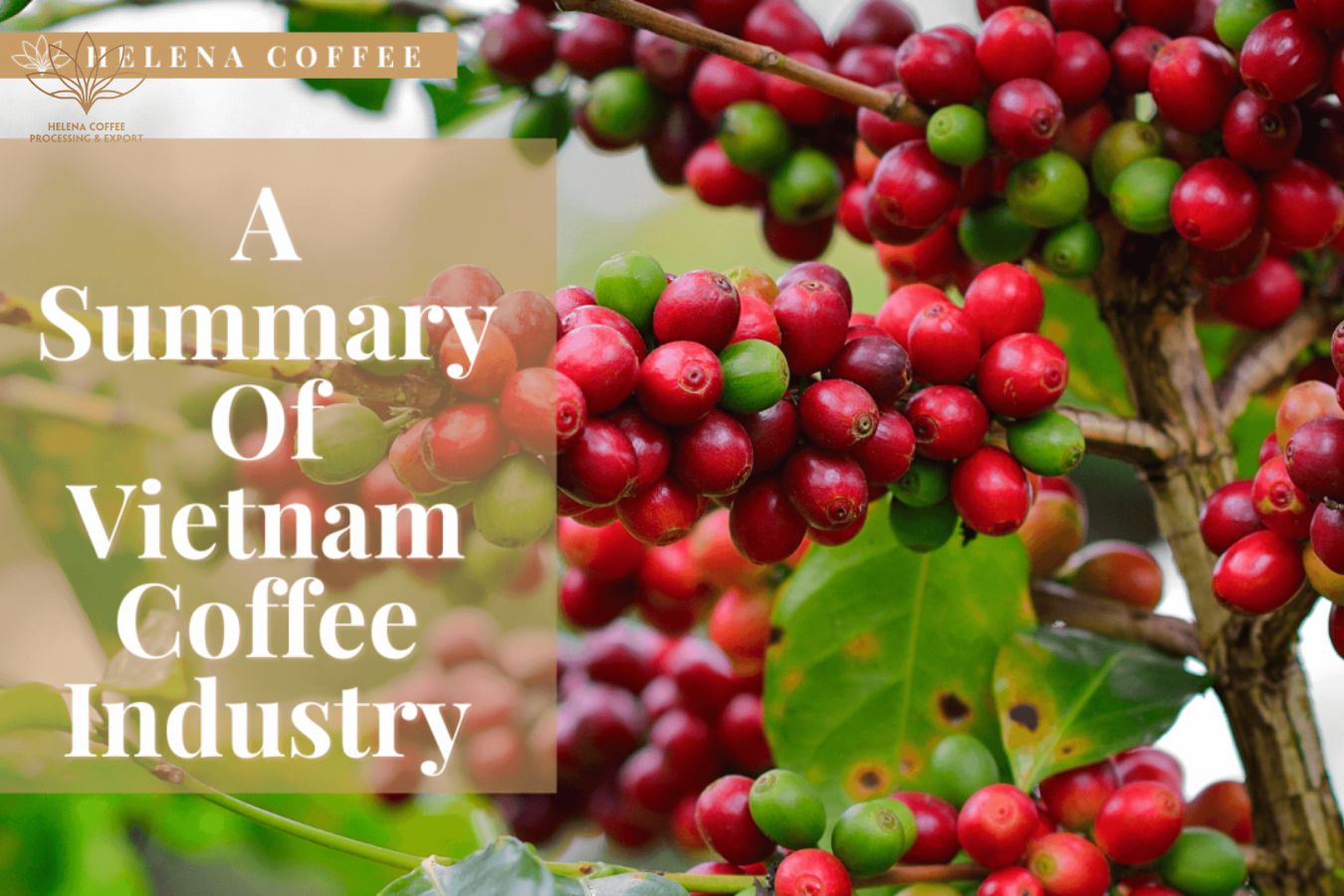
A Summary Of Vietnam Coffee Industry – Vietnam’s agriculture and economy have significantly benefited from the importation of coffee during the past three decades.
More than 500,000 people now work in the Vietnam coffee industry, providing the primary income source for thousands of households.
Coffee exports often make over 15% of all agricultural exports, and in recent years, their contribution to the sector’s GDP has consistently topped 10%.
The development of the Vietnam coffee industry
The French initially brought coffee to Vietnam in 1857. Vietnam is now the world’s second-largest coffee producer, having boosted its coffee production from 5900 hectares in the early 1990s to half a million hectares with an annual output of more than 25 million bags, thanks to government assistance.
Robusta and Arabica are the two most common varieties of coffee in Vietnam. The Arabica types only account for a small percentage of the coffee production, with Robusta making up the majority (92.9%) of the total coffee area.
Estimates place the general area under coffee cultivation at 600,000 acres. The Central Highlands, which include Dak Lak (190,000 ha), Lam Dong (162,000 ha), Dak Nong (135,000 ha), Gia Lai (82,000 ha), and Kon Tum, are where coffee is primarily grown (13,500 ha).
Zoning and agriculture
The Agricultural Product Value Added Association and the Agro-product Stabilization Agency honoured this at the International Coffee Roasting Competition in Paris in 2015.
A Vietnamese coffee company won a Silver Medal for its AROMA coffee product (a blend of the three best Arabica coffees in Vietnam) and a Bronze Medal for its intense coffee in this competition (a mixture of Arabica Bourbon from Cau Dat – Da Lat and Robusta from Buon Ma Thuot).
The Government has created a master plan to evaluate and re-zone coffee districts, replace old coffee trees with new types, and control the spread of mass farming while enhancing the quality and profitability of coffee production.
As a result, Robusta will be planted across 530,000 hectares in four provinces in the Central Highlands: Dak Lak, Lam Dong, Dak Nong, and Gia Lai. In Son La (Northwest), Nghe An, Quang Tri (Central), Lam Dong (Central Highlands), and a few other locations in the central region, Arabica coffee will be planted.
Manufacturing system
There are primarily two different sorts of diverse farms. A synchronous agricultural system is what this is. The second form involves the cultivation of several crops in distinct plots. A different farming system is what this is.
One of the factors contributing to Vietnamese coffee’s poor quality is the country’s traditional method of stripping green and ripe pods (located in the Central Highlands)
Depending on the variety, the characteristics of the soil, and the slope of the hills, the density of Arabica coffee trees per hectare in the farming environment of Vietnam ranges from 2,660 to 6,660 trees. The thickness of Robusta coffee is around 1,330 trees per hectare.
Typically, cultivation begins during the wet season. For coffee trees to thrive, it’s crucial to ensure they have access to enough water, shade from the sun, and wind.
Many Vietnamese coffee farmers have been using cutting-edge agricultural production technology in addition to expanding their cultivated areas to obtain certificates like the 4C (Common Code for the Coffee Community), VietGAP (Good Agricultural Practice of Vietnam), UTZ (Certified Certified), and RFA (Rainforest Alliance). Over 200,000 hectares, or more than 30% of Vietnam’s total coffee-growing land, had been certified as sustainability efforts as of 2017.
Problems and obstacles facing the Vietnam coffee industry
Vietnamese coffee manufacturing has transformed into an export-focused sector over the previous few decades. Despite being the world’s second-largest producer and exporter of coffee, the Vietnam coffee industry is currently dealing with several difficulties.
Coffee-growing regions are in peril due to climate change and intense weather. Vietnam may lose half of its present Robusta-producing area by 2050, according to the International Center for Tropical Agriculture (CIAT), due to changing rainfall patterns and rising temperatures.
The best yield is provided by coffee plants between 10 and 15 years old, which make up around 50% of all trees planted in Vietnam. These trees will play a significant role in Vietnamese coffee production in the coming years.
As a result, despite increased freshly planted acres, obtaining high economic efficiency is challenging because of low productivity and high production costs.
For maximum yields, previous intensive farming techniques required excessive input (fertilizer, irrigation, etc.). As a result, the number of coffee plants decreases, and the soil becomes significantly contaminated, which invites a variety of illnesses and pests, including fungus and root nematodes.
An unbalanced and poor-quality output has resulted from the small scale and dispersion of household production.
Although coffee is a crop that requires a lot of water, most coffee-growing regions still primarily use antiquated irrigation, which results in significant water loss.
Plans and prospects
Vietnamese policymakers have implemented long-term reforms in the Vietnam coffee industry to address these issues.
Sustainable management of the economic and environmental resources for the coffee industry is the goal of the government’s Sustainable Coffee Development Plan to 2020 with a Vision to 2030, which was released in 2014.
The strategy contains specific economic goals for the Vietnam coffee industry’s performance, like boosting deep processing for increased value addition.
Additionally, it establishes clear environmental objectives. Such as capping coffee production at 600,000 hectares nationwide and replacing old, inefficient varieties of coffee trees with newer, more effective ones.
It may be claimed that Vietnam’s coffee business has been compelled to look ahead to close gaps in the economy and the environment. These objectives demonstrate a commitment to uphold Vietnam’s status as a coffee “giant,” guaranteeing stable production circumstances in the long run.